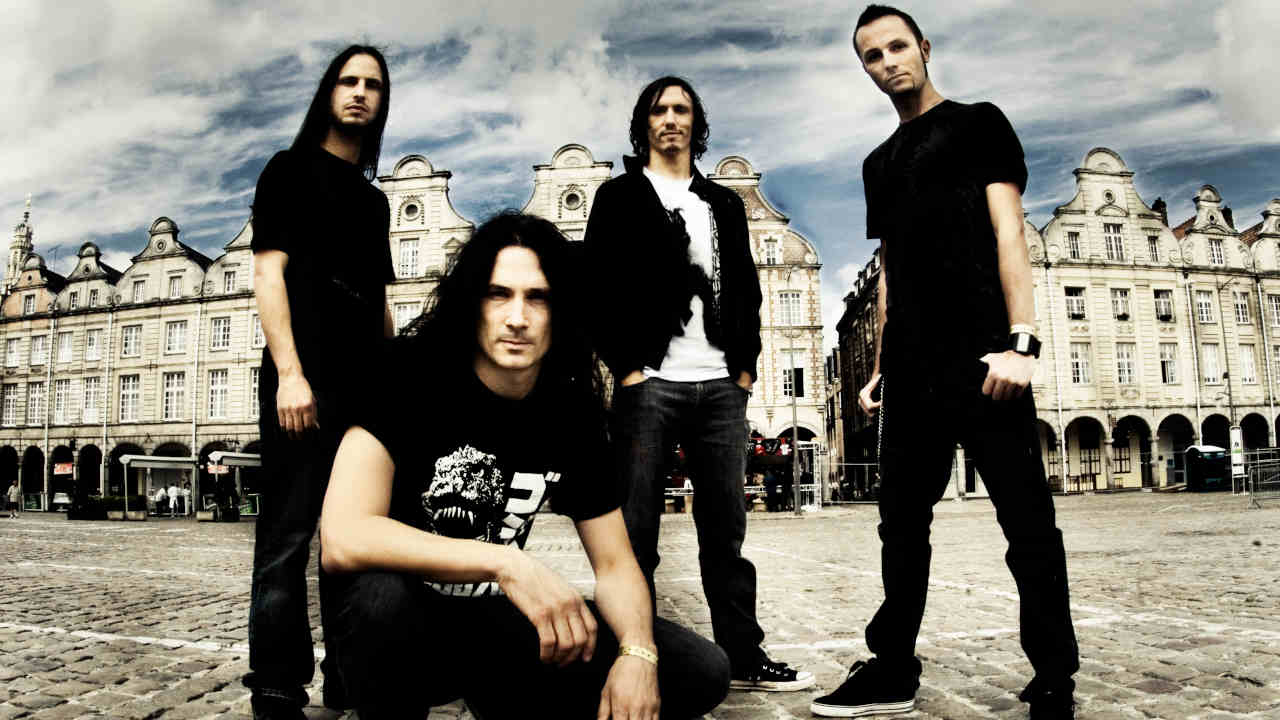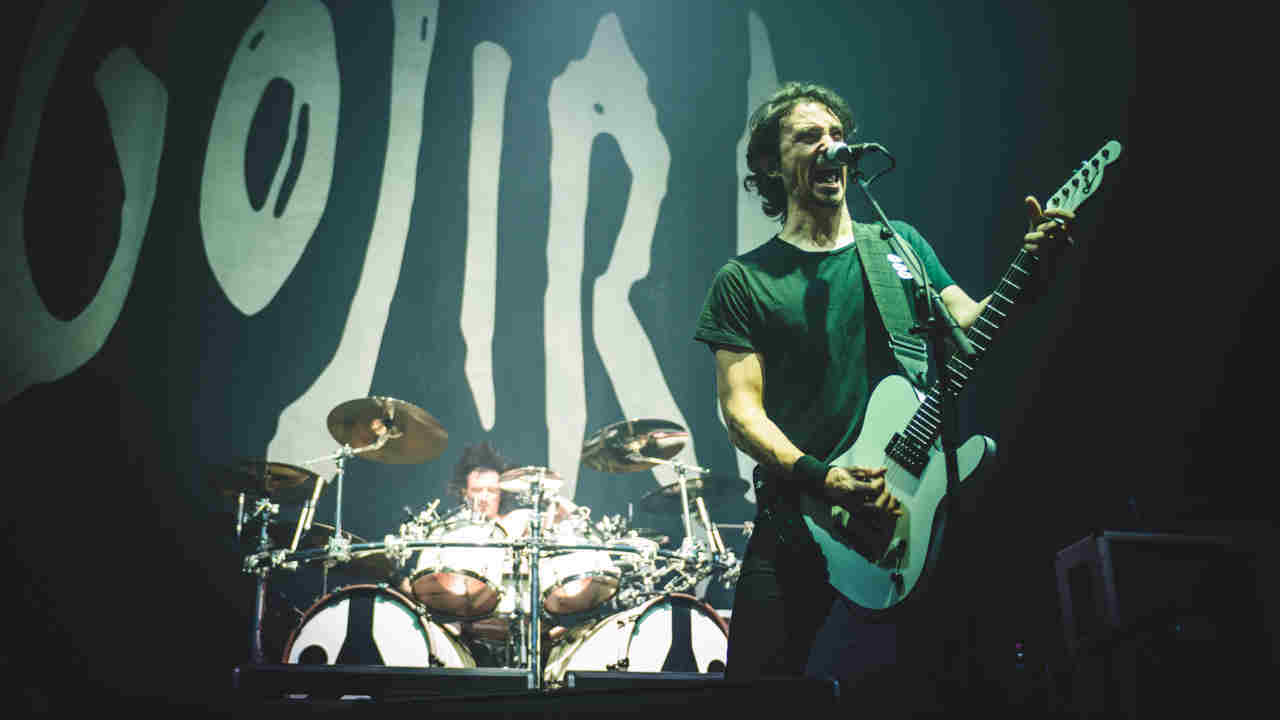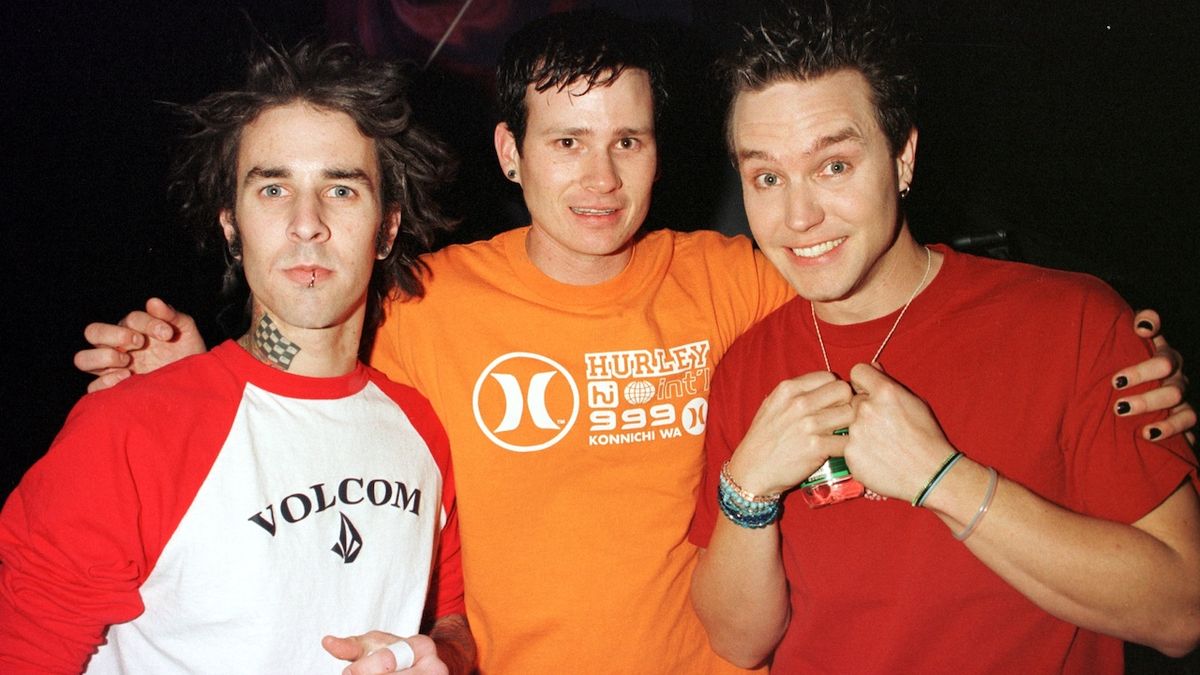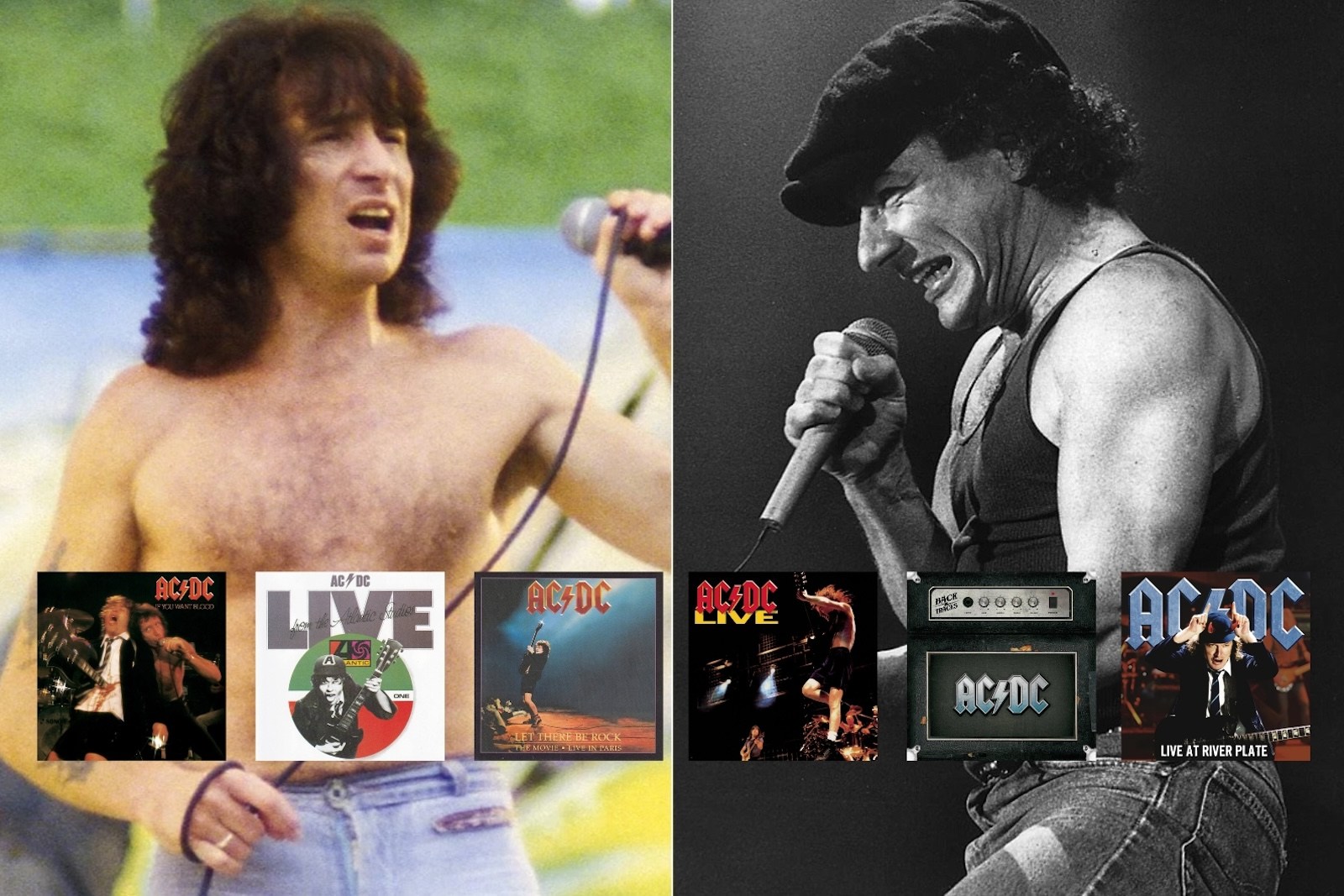“I feel like we’re more than a pile of bones and flesh. I don’t believe in the end of the spirit or soul”: How Gojira emerged from darkness and turned tragedy into strength with Magma

Gojira have risen from French death metal outsiders to one of the most vital and important metal bands of the 21st century. In 2016, as they released their sixth album, Magma, the band talked about the trauma that shaped them and the fire that fuels them.

As children growing up in Ondres, a bijou, tranquil town on France’s south-west coast, Joe Duplantier and his younger brother Mario were forever building dens, collecting driftwood from the beach and fallen branches from the nearly woods to fashion rudimentary shelters in which they would hide away for hours at a time to watch the daily rituals of the natural world slowly unfurl.
Memories of those innocent, idyllic days came back to the Duplantier brothers as they set to work building their own recording studio in the rather less bucolic surroundings of Ridgewood, in the New York borough of Queens, during the winter of 2014. Day after day, the pair hauled sand, wood and cement into the warehouse, working dawn to dusk with hammers, saws and trowels upon the construction in the harshest of weather conditions. It wasn’t glamourous work – the lack of basic toilet facilities at the outset necessitated shitting into plastic bags – but by the spring of 2015 Gojira’s vocalist/guitarist and drummer siblings were elated that their dream recording facility, now called Silver Cord Studio, was coming together exactly as they had envisaged it.
“When we write and record a record, we need to feel comfortable, like we’re in our own cocoon,” says Joe Duplantier. “Building this space ourselves, we were able to be particular with the materials we had around us, and the textures and visuals and lighting. We’re French, so we’re very poetic and romantic and sensitive, and we believe that everything is connected, and so if we like the walls we’re looking at, then the music we make within those walls will probably sound good when we record it.”
In April 2015, the brothers set up at Silver Cord to begin work upon their sixth album, the follow-up to 2012’s acclaimed L’Enfant Sauvage. Just two weeks into the process, however, the brothers received news from home that their mother was gravely ill in hospital, and their carefully constructed world began to fall apart.
Vivacious American student Patricia Rosa was just 20 years old when she met and fell in love with French artist Dominique Duplantier during a trip to Europe in the early 1970s. The pair married and settled outside Bayonne, where Patricia taught yoga and dance classes while raising three children, Joe, Gabrielle and Mario. Interviewed in 2013 by Decibel magazine, Patricia remembered her elder boy, Joe, as a “creative, sensitive, gentle” youngster, while Mario, five years younger, was “an expansive, funny, lovable, carefree and open child.” Today, the brothers speak of their childhood as “beautiful, organic and happy”, with both parents providing warm encouragement and support for their various creative endeavours.
“It was a very nice environment,” recalls Joe. “Life was about creating weird stuff all day. And our mum taught us to respect things and people. She was always interested in the natural world, always picking up little stones and pieces of wood on the beach and putting them together to make something beautiful. She helped make us who we are.”

As articulate, well-mannered, thoughtful and compassionate human beings as you’re ever likely to encounter, the Duplantier brothers are a real credit to their upbringing. Sitting beside their mother’s bedside last year as she battled against cancer was naturally painful and traumatic for her loving sons, with Joe remembering the time as “a real nightmare”.
“She was suffering so much, it was Hell for her,” says Joe quietly. “We didn’t know whether to hope for her to get better or to hope that it would end soon. It was spiritual and mental torture to not know what to wish for. We had to learn not to hope, but to just live in the moment.”
On July 5, 2015, surrounded by her family, Patricia Rosa Duplantier passed away. Left to pick up the pieces of their own lives, after returning to New York with their own children and resuming work upon their new album, Joe and Mario would often find themselves overwhelmed with emotion during their recording sessions, tears streaming down their faces as they tracked new songs.
Understandably, then, Gojira’s new material became infused with memories of the past and thoughtful, poignant and affecting reflections upon life, love, loss and mortality. Much like Baroness’s beautiful Purple, another album born from harrowing experiences, the resulting collection of songs have a transcendent, uplifting quality, uncovering hope and light amid the darkness.
On The Shooting Star, Joe Duplantier sings: ‘When you get to the other side, please send a sign.’ On Low Lands, the lyrics run: ‘While you drift away from all the plagues of this world, you’re put out of misery… giant monster, you won’t have to face it again.’ And on the album’s title track, Magma, his words are: ‘The poison slowly spreads, through the body and the mind. Close your eyes and drop your things, be ready to fly…’ As much as it’s an album very obviously rooted in personal tragedy, Magma emerges as a celebration of life, liberty and independent thought and deeds, and a stirring tribute to the redemptive power of love.
“The celebration part is true,” says Joe. “We made this album with sadness and pain, but it’s a pure expression of feelings in the moment: we are mourning, but at the same time there is joy. Even though we lost our mother, in some ways we didn’t lose her, because she made us, and we are part of her, and somehow her spirit is still around with us.”
“I remember when we decided to call the album Magma,” says Mario. “It was when our mother was in hospital and it was the most difficult time for all of us. We were feeling a mix between memories of the past and a fear of the future, with all the emotions burning inside. ‘Magma’ is this expression of something boiling inside: we cannot touch it, but eventually it will erupt. It makes perfect sense for how we were feeling at the time.”
Gojira – Stranded [OFFICIAL VIDEO] – YouTube ![Gojira - Stranded [OFFICIAL VIDEO] - YouTube](https://img.youtube.com/vi/FNdC_3LR2AI/maxresdefault.jpg)
Perhaps unconsciously, the album also alludes to the point where Gojira find themselves in their career in 2016 – specifically, the idea that the band are on the cusp of something explosive. On May 19, 2006, the French quartet, filled out by guitarist Christian Andreu and bassist Jean-Michel Labadie, played their first UK show in a small club on the Brighton seafront. It was immediately apparent to the few hundred people in attendance – this writer among them – that something very special had washed ashore: conversations that night largely centred around the notion that here, before our eyes, was The Future of Metal.
If the two albums which followed – 2008’s The Way Of All Flesh and 2012’s brilliant, complex L’Enfant Sauvage – didn’t quite propel the French quartet into metal’s premier league, they certainly garnered for the band the respect and admiration of the scene’s biggest hitters – Metallica, Iron Maiden, Lamb Of God and Mastodon being among the acts who took Gojira out on tour – and helped grow a loyal, passionate, fiercely evangelical fanbase.
Though their roots lay in death metal, one internet commentator neatly encapsulated the band’s ethics and integrity when he christened Gojira ‘Life Metal’, a tag which speaks to both the quartet’s optimistic, humanistic outlook and their tireless, fearless and very vocal championing of environmental causes. Though Magma is less explicitly politicised in this respect, its key lyric, closing the pulverising Silvera, reads: ‘When you change yourself, you change the world’, an ethos Joe and Mario identify as their band’s key message.
“We’re no eco warriors,” insists Mario, “but we’re conscious human beings, and of course we think about life, and how we’d like to live. And those thoughts have resonance. It’s not only about the ecology of nature, it’s also the ecology of human beings. We all have a responsibility to think, and do, things that enrich our word. It’s a chaotic world, with an economy based on fraud, and politics based on corruption, but as ugly as the world is, we can change it.”

“We’re a spiritual band, because we care about the kind of energy that we put out there,” adds Joe. “There are songs we wrote for Magma that were darker, but we were wary of putting out bad energy. In terms of infinity, there are no small things, everything is important. People bitch about the world, like, ‘Argh, it’s so shit!’, but what, do you give up? ‘The world is polluted, so I’m going to pollute more! Everyone steals, so I’m going to steal more!’ We create the world, we create our environment. You hear people all the time using the word ‘they’, as in, ‘They want us to…’, talking about the government or the ruling classes, but ‘they’ is ‘us’. If I think people complain too much, I should complain less. If I think people are too greedy, I should be less greedy. You are part of the people, so if you make a little more effort, you can effect change.”
For the Duplantier brothers, an interest in environmental issues is as natural as breathing. As kids, growing up by the coastline, the boys spent almost as much time in the sea as on land, and Mario recalls days of agonising illnesses directly caused by pollutants in the water giving him ear infections. An environmentally protected area, the dunes at Ondres were not regularly cleaned, meaning that Joe and Mario would find dead animals, industrial waste and household garbage washed ashore daily.
“We would be coming home with oil stains on our feet, so we could physically see that that shit was coming on the beach every day,” says Mario. “It would hurt us to see the unnecessary pollution.”
“Seventy per cent of our planet is water, but because it’s not our natural element, that’s the environment we rape, pollute and destroy, without any restrictions,” adds Joe. “How can people not get annoyed about that? Why would anyone think that’s something easy to ignore? We’re not actively confronting the people who do this, but as long as we have a voice, we’ll continue to speak up. It’s a decision to think positive. We will never give up even if the world seems fucked.”
Gojira – Low Lands [Official Video] – YouTube ![Gojira - Low Lands [Official Video] - YouTube](https://img.youtube.com/vi/7j03lu6SBR8/maxresdefault.jpg)
As eloquent and passionate as the brothers are about the causes in which they believe, they’re not politicians, of course, but musicians. And musicians who are about to throw themselves headlong into another exhaustive bout of touring and promotion. Ask the brothers for their upcoming itinerary and they’ll reel off commitments in France, Italy, Poland, Switzerland, Belgium and, of course, the UK – where they have appointments with festival crowds at Download and Bloodstock on their docket – ahead of a scheduled US headline tour. “All the venues are bigger than before,” says Joe with a smile, “so that’s a nice feeling.” A band now for 20 years, Gojira might not be the hungriest act on the circuit, but one should not mistake their self-assured, self-aware geniality as indicative of a lack ambition. Ask Joe and Mario if they ever dream of being the biggest metal band in the world, and, as one, the brothers exclaim, “Of course!”
“We have that competitive sense, like every other band,” says Joe. “We still want to smash other bands. I see the music business as a slippery path. If you’re not careful you can fall off in seconds and hurt yourself really badly. Or if you go too high too fast you can get dizzy and fall. It’s like walking on a rope – you can’t run, but if you go carefully step by step, you can make progress. We take baby steps in our career, and don’t grab desperately for every available opportunity, but we’re evolving and getting more confident within ourselves with each passing year.”
“I’m super happy with what I have achieved with this complex, and dark, and mystical music, but we’re not thinking we’ve reached our limit,” adds Mario. “With Magma, for maybe the first time, we’re all 100% happy with the album. Having Joe as the producer and the whole band working together from A to Z, we managed to keep all our charm and personality intact and that gives us more confidence about what lies ahead.”

2016 looks set to be a huge year for Gojira. Without hype or compromise, they’ve quietly emerged as one of the most essential, necessary bands in our world, a group who’ve retained their integrity, conscience and soul even as their popularity has swollen. More accessible than anything the band have released to date, Magma might just mark a tipping point on their 20-year journey. And as much as the Duplantier brothers are facing the future without their earliest, most loyal supporter, the pair are secure in their belief that their late mother’s spirit will guide them safely onwards.
“It’s funny,” says Joe, “because I’ve always thought a lot about death, and written songs about death, but when you’re forced to face up to it, it’s still a huge mystery. But I have an intuition that our consciousness remains. I feel like we’re more than a pile of bones and flesh, more than just organs functioning together: somehow I don’t believe in the end of the spirit or soul. I still feel my mother’s presence, because her love is never-ending. And now we want to continue to make her proud.”
Originally published in Metal Hammer issue 284, May 2016










![Dea Matrona - Red Button [Live In Brighton] - YouTube](https://img.youtube.com/vi/8qVenW1Nu8c/maxresdefault.jpg)













































